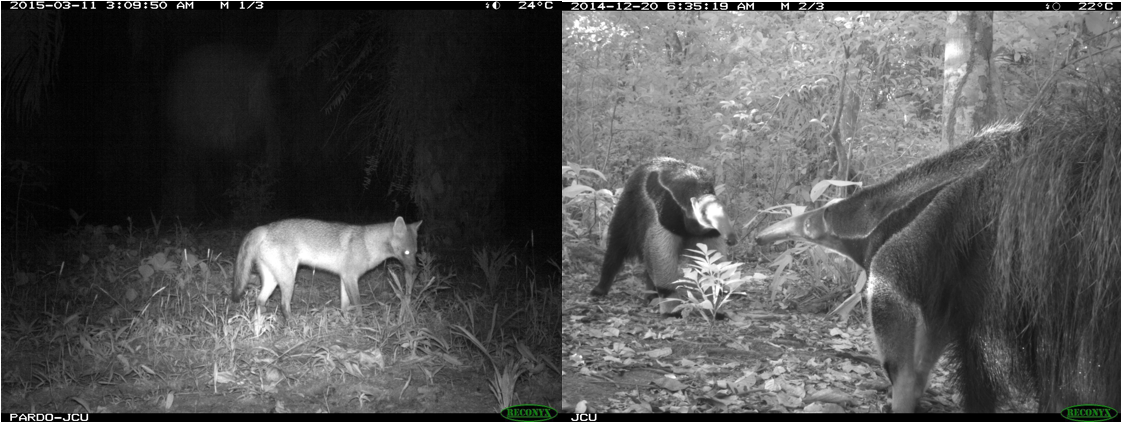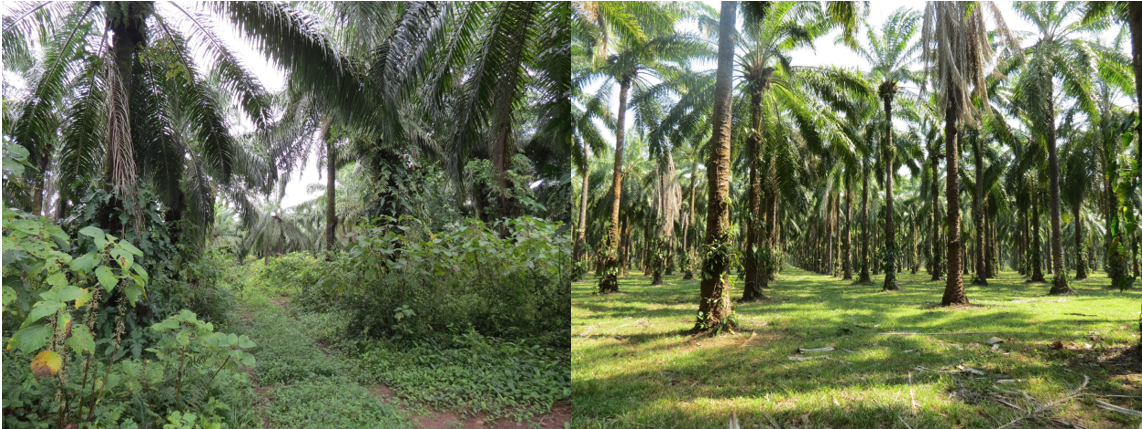- Researchers studying oil palm plantations in Colombia found that mammal diversity dropped compared to nearby savanna.
- Some mammals used plantations for hunting and foraging, but none stayed permanently.
- With the Colombian government’s pledge to drastically increase its cropland, scientists fear savannas and wetlands could be at threat.
As oil palm plantations expand across the world, razing swaths of tropical rainforests in their path, fears about their impact on the environment have also grown. In the plantations of Colombia, a new study has found yet another way they are altering global biodiversity: by impacting the diversity of mammals.
“Some species do very well” in oil palm plantations, said Lain Pardo, one of the authors of the study published in the journal PLOS ONE. These include species such as the crab-eating fox (Cerdocyon thous), jaguarundi (Herpailurus yagouaroundi) and giant anteater (Myrmecophaga tridactyla).
“Our results suggest that even within the terrestrial mammals group there is a lot of variability,” Pardo said.
Relatively common species, especially small- to medium-sized predators, likely feed on the rodents and other agricultural pests that abound in oil palm plantations. For giant anteaters, their main food source is also a common denizen of plantations. But most other mammals, including larger rodents such as the agouti (Dasyprocta fuliginosa), spiny rat (Proechimys spp.) and paca (Cuniculus paca) struggle to find food and shelter in the monoculture. Scientists found that these species were rarely present in plantations, if at all. And even those that were frequently found within the plantations were only there to forage, returning to the forests to sleep.

The researchers undertook the study in oil palm plantations converted from former pasture in Colombia’s Llanos Orientales region, meaning sensitive species such as tapir (Tapirus spp.) and giant armadillo (Priodontes maximus), both listed as vulnerable by the IUCN, had been driven out long ago.
The loss of such large mammals may have made the difference in species richness between the plantations and remaining forest fragments less stark than it would have been in a previously untouched area, according to the study. Scientists only detected puma (Puma concolor), tayra (Eira barbara), coati (Nasua nasua) and collared peccary (Pecari tajacu) — all ecologically important species — in oil palm areas bordering less disturbed savanna and the Meta-Casanare and Alto Rio Meta conservation corridors.
The study’s results are supported by a 2007 paper by researchers at the Zoological Society of London, which focused on mammal species abundance in oil palm plantations in Southeast Asia. Researchers found that only four mammals — a mere 10 percent of the species known to exist within the landscape — made use of oil palm plantations. As with the Colombia study, none of the species found within the plantation were a conservation priority.
Both studies came to similar conclusions.
“These results show that some large-scale palm oil expansion generally has severe impacts on native mammals,” said William Laurance, a co-author of the Colombian study and professor at James Cook University in Australia.
But he also acknowledged that maintaining adjacent forest corridors and allowing undergrowth in plantations could substantially increase species diversity.

“At all costs, we want to avoid ‘sterile’ plantations that have nothing but palm oil trees,” Laurance said. “These are little more than biological deserts.”
The researchers chose to survey mammals due to their sensitivity to ecosystem quality and because they serve as an excellent indicator for overall biodiversity.
“Vegetation inside the plantations helps to provide more complex environments and therefore promote the presence of other species such as spiders, butterflies, crustaceans, and even other vertebrates (snakes, birds), which attracts other mammals,” Pardo said in an email.
The researchers also write that free-roaming cattle negatively impacted the biodiversity within the plantations, suggesting the importance of better livestock management and proper enclosures.

Palm oil has been a staple crop in West Africa for 5,000 years. But when European traders introduced it to Southeast Asia in the early 19th century, they found the humid climate so suitable that today, Indonesia and Malaysia produce 85 percent of the world’s palm oil.
South America currently accounts for just 6 percent of all globally traded palm oil, but experts say this looks poised to change.
The Colombian government has pledged to expand the land given over to plantations and other cash crops to 7 million hectares (17.3 million acres) by 2020 — an area almost the size of Ireland. The figure is nearly 14 times the 516,000 hectares (1.3 million acres) of land that Colombia devoted to palm oil in 2017, which in turn was a threefold increase from the 157,000 hectares (388,000 acres) dedicated to oil palm cultivation in 2000.
Pardo warns that Colombia’s savannas and wetlands may bear the brunt of this expansion. He said savanna “could be under great pressure” from agriculture, including palm oil, and petroleum companies. It might not be the deforestation commonly associated with palm oil, but it could be just as ecologically devastating.
Despite palm oil’s environmental impact, the commodity itself is so widely used that, according to WWF, it’s in almost 50 percent of packaged supermarket products. Odorless and flavorless, it’s a natural preservative, cheaper than other vegetable oils, and is found in products as diverse as instant noodles and toothpaste. Palm oil can be used as a biofuel, and even raises the melting point of ice cream. As a crop, it’s incredibly efficient: an acre of oil palms yields 10 times more vegetable oil than the same area of soybean or coconut crops.
Worldwide, oil palm plantations cover a combined 27 million hectares (66.7 million acres). That’s a little larger than the area of New Zealand.

In 2018, the IUCN concluded that palm oil is “here to stay.” But there are ways, as this study indicates, to reduce its negative impacts.
Editor’s note: William Laurance is a member of Mongabay’s advisory board.
Citations:
Pardo, L. E., Campbell, M. J., Edwards, W., Clements, G. R., & Laurance, W. F. (2018). Terrestrial mammal responses to oil palm dominated landscapes in Colombia. PLOS ONE, 13(5). doi:10.1371/journal.pone.0197539
Maddox, T., Priatna, D., Gemita, E., & Salampessy, A. (2007). The conservation of tigers and other wildlife in oil palm plantations. Jambi Province, Sumatra, Indonesia. ZSL Conservation Report No. 7. The Zoological Society of London, London.